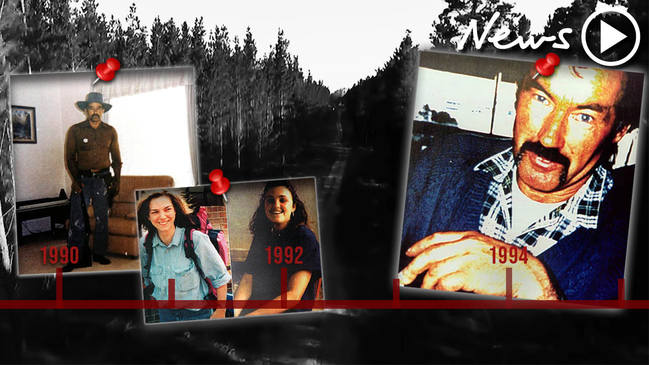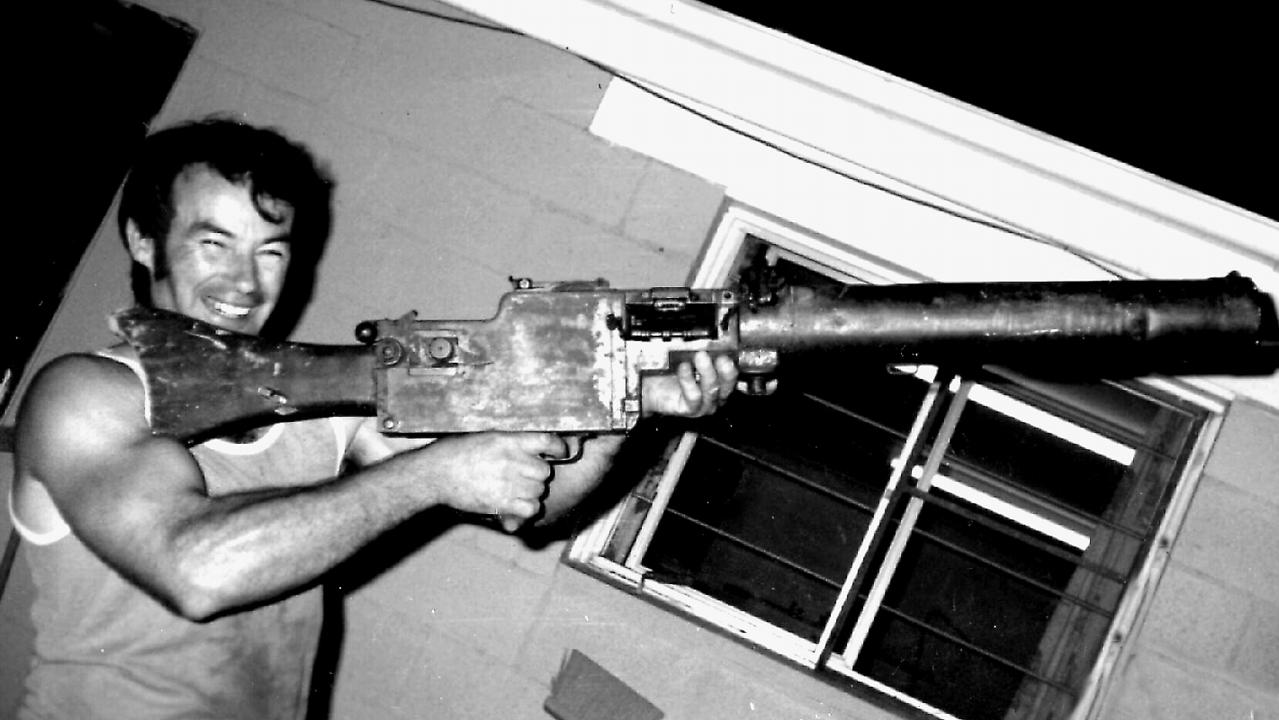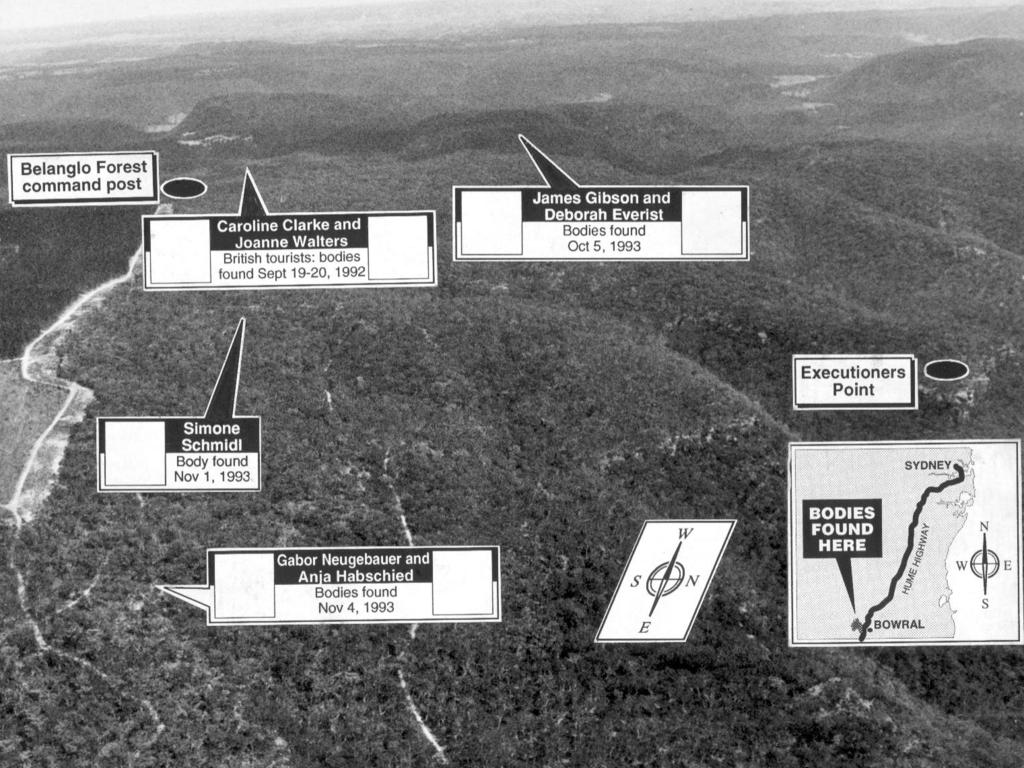Life and crimes of Ivan Milat, Australia’s most notorious serial killer
WARNING: Graphic content. Australia’s most notorious serial killer is dead, but he left behind buried secrets that are yet to be uncovered.

WARNING: Graphic content.
Ivan Milat died a painful and ignoble death, in a hospital bed while police officers guarded the door.
Although detectives had hoped for a deathbed confession, a last-minute show of empathy from a man who had shown none throughout his life, Australia’s most notorious serial killer never once admitted to the murders he was convicted for, continuously denying he was responsible for the cruel systematic series of killings until his dying breath.
He spent the last 25 years of his life constantly attempting to appeal his verdict, protesting his treatment in prison and claiming he was set up.

A LIFE OF CRIME
Milat was born in 1944, the fifth of 14 children born to a Yugoslav man with an explosive temper, and a long-suffering Australian-born mother.
The Milat clan were, by all accounts, a law unto themselves, and by the age of 17, Milat had been convicted of theft. A few years later, he had graduated to armed robbery and served jail time. In 1971, he was charged with raping two women, but escaped the charges. That same year, he was brought up on yet another rape charge, and faked his death in order to avoid prosecution. He fled to Queensland, then Victoria before flying to New Zealand, where he lived for two years. Milat returned to Australia in 1974, after his mother suffered a heart attack. He was arrested as he visited her bedside, but managed to avoid any charges.
Numerous murders that occurred throughout the ’70s have been attributed to Milat, although Clive Small, lead detective of the task force that captured Milat, is satisfied that any of the murders and disappearances that fit Milat’s method could not have been done by him, as either the time frame of Milat’s movements didn’t fit, or other factors had cleared him. If, indeed, the Backpacker Murders were the only killings he committed, he was operating in a suspiciously similar manner as early as 1977, when two women hitchhiking from Liverpool to Canberra narrowly avoided becoming his first murder victims. The pair were shaken by the incident, but chose not to report it, only informing police of their near escape as the horrors unfolded on the news in late ’93.
Like the couple who escaped Milat in 1977, all his victims were picked up in the Liverpool area, and were flagging rides south along the Hume Highway. The last couple Milat murdered were the first to be discovered, and were the least concealed — by this point he seems to have become cocky about the discovery of the bodies. Caroline Clarke and Joanne Walters were two British backpackers who decided to travel together. They had plans to see the Northern Territory and the Nullarbor Plain, a trip they would fund by taking fruit picking work in Victoria. They were last seen alive in Bulli Pass, asking directions to the Hume Highway. They made it to the highway, but not to their other intended destinations.
Their bodies would be found five months later.
RELATED: Milat confessed to his mother before her death

‘PLEASE BE CAREFUL’
The sign at the start of Belanglo State Forest advises visitors to “please be careful”. It was erected many years before Milat used the forest as his own torture ground, but it has taken on an unintended ominous meaning since the bodies of seven young backpackers were discovered in various states of decay in the dense scrub.
In September, 1992, Keith Caldwell was taking a training course in orienteering, being taught by Ken Seily. Seily had negotiated the thick terrains of Belanglo numerous times before, but this day would be unlike any other. The pair had stopped at the aptly named Executioners Drop when they smelt something horrific. Searching for the source of the smell — assumed to be a decaying animal — they instead stumbled across clumps of human hair and clothing, injudiciously hidden under a bundle of sticks. The following day, police found another body, just 30m from the first, and it was immediately apparent they were dealing with a double murder. Both bodies had been stabbed numerous times, in a manner that would be described as “frenzied”. Walters had been stabbed in the neck, the chest, and — chillingly — nine times in the back, injuries intended to paralyse, rendering her helpless. Clarke had also been stabbed numerous times and shot 10 times in the head. Milat had used the victim’s dead body for target practice.
It was a horrific find, but it was just the start of the nightmare.

In October 1993, just over a year since the discovery of Clarke and Walters’ bodies, a human skull and femur were discovered in an isolated section of the forest. A local man was hiking when he happened upon the grisly find. Police uncovered two more bodies, those of Deborah Everist and James Gibson. The mode of murder was unmistakably similar. Gibson’s upper spine had been torn through with a knife, causing paralysis, and frenzied stab marks to his chest and back ripped through his heart and lungs. Everist had only been stabbed once, in the back, but had been beaten to death, blows so brutal that they fractured her skull in two places and shattered her jaw bone. Until this point, police had treated the double-murder as a stand-alone case. A five-day search of the forest after the discovery of the first bodies had revealed nothing, and investigators had ruled out any further finds. The latest discovery reframed the investigation. The police were now dealing with a serial killer.
RELATED: Man who escaped from Milat says killer didn’t act alone


At the start of November, police discovered the final three bodies: those of Anja Habschied, Gabor Neugebauer and Simone Schmidl. Schmidl’s murder matched the others, with her spinal cord severed, and numerous stab wounds puncturing her heart and lungs. The murders of Habschied and Neugebauer, German lovers who were backpacking together around Australia, were much more vicious. Neugebauer had been shot in the head six times, but unlike Clarke, these shots were to intended to kill, not to practise his aim. Habschied had been decapitated; her head has never been located.
Milat was in no hurry while inflicting his brutal string of murders. Each victim’s body also led to the discovery of corresponding campsites nearby; police speculated that he spent long stretches of time camping out near his victims after murdering them. There was a ritualistic touch to the murders, too: each body was found face down, arms behind their backs, covered by a pyramid of ferns, sticks and branches.


THE GAME IS UP
In 1990, British backpacker Paul Onions hopped into Milat’s car, and immediately got a good vibe from him. This first impression soured quickly, when Milat pulled a gun on him. “This is a robbery,” he told Mr Onions.
“I can remember the silver bullets shining in the chamber,” he recalled more than two decades later, “but then I saw the rope and that scared me more.”
A robbery by gunpoint was scary enough, but the rope suggested that Milat had no intention of letting him escape with his life. Mr Onions had already informed him of his dire financial status, hence the need to hike, and Milat’s true intentions flashed through Mr Onions’ mind.
“I just thought, ‘This is it … run or die’, so I undid my seatbelt and jumped straight out of the vehicle and ran,” he said.
RELATED: Milat’s secret life in Supermax

Milat chased and fired his gun at the terrified backpacker, who managed to escape. Flagging down motorist Joanne Berry, Mr Onions travelled to Bowral police station to make a statement, but nothing came of it. They took down the details, and gave him $10 to travel to the British High Commission in Sydney. Terrified by his ordeal, Mr Onions left the country.
In early 1994, news of the bodies found in Belanglo State Forest had reached Britain.
Mr Onion watched news reports and was transported back to his close call four years earlier. He contacted NSW Police. This time, they were interested. Mr Onions was flown to Australia, where he would positive identify Ivan Milat as the man who tried to kill him.
Unbeknown to Mr Onions, Joanne Berry had also been in contact with the police, and had corroborated his story. The game was up for Milat.
Just over two weeks later, 50 police officers surrounded Milat’s home. A further 300 police searched homes belonging to five of his brothers. Milat claimed he didn’t have any weapons, but police discovered numerous rifles — including parts of a .22 that matched the type used in Caroline Clarke’s murder — walled into the house.


Souvenirs such as cameras, camping gear and clothing that once belonged to his victims were also found at his house. Milat gave no explanation as to why these items were in his home. A backpack belonging to one victim was found at his brother’s house; a gift from Ivan.
After the raids, Clive Small travelled to Milat’s house to face the man he had been hunting.
“Milat was sitting there calmly,” he recalled. “He was a guy who thought he was still in control. I remember looking at him and thinking, ‘This guy thinks this will all be over in an hour or two’.”
Instead, Milat was charged with the seven murders, and tried over 15 weeks. His defence attempted to lay blame at the feet of his brother Richard, claiming he planted the evidence at his brother’s house.
“It is absolutely irrefutable that whoever has committed these … offences must be in the Milat family or so very closely associated to it that it doesn’t matter,” his lawyer told jurors.
“The question is,” he continued, “do you have a reasonable doubt that it was Ivan Milat as opposed to someone else in the family?”
There was no doubt. Milat was given seven consecutive life sentences without the possibility of parole. As a welcoming, he was beaten up on his first day at Maitland Gaol.

LIFE IN PRISON
A year after he first entered Maitland Gaol, he attempted to escape, and was transferred to the maximum security prison in Goulburn, which is basically a prison within a prison.
Escape was impossible, and so Milat tried to do so within the letter of the law. Various appeals against his conviction were rejected by the High Court, as was an appeal to give evidence in person. His seventh and final call for an inquiry was rejected in 2017.
Other escape attempts involved self-harm. In 2001 he swallowed razor blades and staples in an attempt to be taken to hospital.
He upped his game on Australia Day, 2009, by cutting off his pinky finger, with the intention of mailing it to the High Court. The meaning of this gruesome gesture is unclear, but applying reason to Milat’s actions is unwise. The finger wasn’t able to be reattached.
In 2011, he went on a hunger strike in a failed protest to be given a PlayStation, a move he has repeated, with similar success, a number of other times.
On May 14, Milat was transported from his cell to Sydney’s Prince of Wales Hospital where malignant tumours were found on his throat and stomach. Milat had finally escaped prison, for good.
He had been in and out of hospital since then, returning to the hospital’s intensive care unit on October 14, where he eventually died.

ARE THERE MORE BODIES?
Due to his resistance to offer up a death bed confession — although it is believed he privately admitted to his mother Margaret before she died that he committed the murders — Milat will take many secrets to his grave. How many other murders was he responsible for? How many bodies still lie in Belanglo Forest? Did he, as police once believed, commit earlier murders in 1971 and 1972 in Queensland and Victoria, between faking his death and fleeing to New Zealand?
Perhaps now that Milat has passed, others holding secrets close to their chests will feel compelled to reveal what they know. After all, there is a strong believe that Milat didn’t act alone.
Was somebody else there with Milat, kidnapping, killing, keeping mum all this time?
Ivan Milat may be dead, but there are still buried secrets to exhume.



